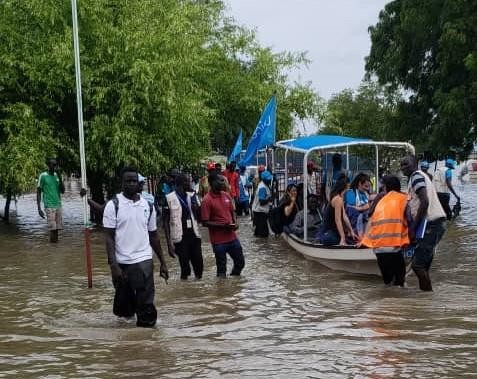The International Organization for Migration (IOM) says efforts to meet the needs of flood-victims in many parts of South Sudan have been hampered by the lack of access to the areas.
IOM said despite efforts by different humanitarian partners, some communities have not received aid due to flooded airstrips and inaccessible roads.
“Access constraints to some of the affected areas are putting pressure on the flood response,” IOM Chief of Mission in South Sudan, Jean-Philippe Chauzy said.
President Salva Kiir Mayardit on 26th October declared a state of emergency in 32 counties in Jonglei, Upper Nile, Warrap, Eastern Equatoria and Northern Bahr el Ghazal regions, after months of unprecedented rainfall across the country.
The rains have displaced thousands of people, destroyed crops and communities livelihoods as well as place them at risk of disease outbreaks.
However, IOM says it will distribute aquatabs, blankets, mosquito nets, tarpaulin sheets, rubber ropes, collapsible jerry cans, and water filter cloths to thousands of floods-affected families in the worst affected areas.
“It was distressing to witness the level of destruction and suffering that the floods have caused. I spoke to one elderly displaced resident who had sought refuge in an overcrowded church standing on a small patch of dry ground in the middle of a quagmire. She told me she cannot remember floods of this magnitude,” Chauzy said after a recent visit to flooded areas of Jonglei.
In the disputed Abyei region which has also been affected by floods, IOM has provided plastic sheeting, mosquito nets, blankets, and sleeping mats to 16,711 floods-affected population.




